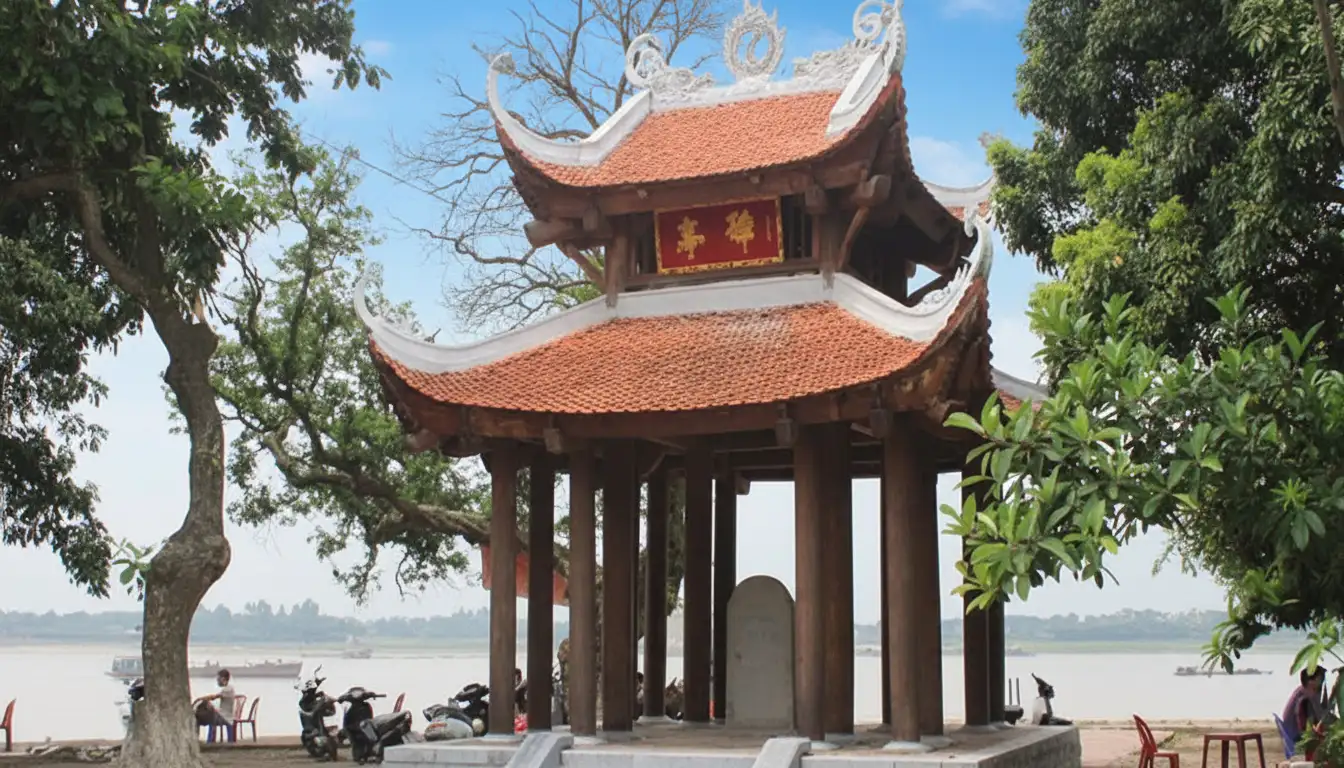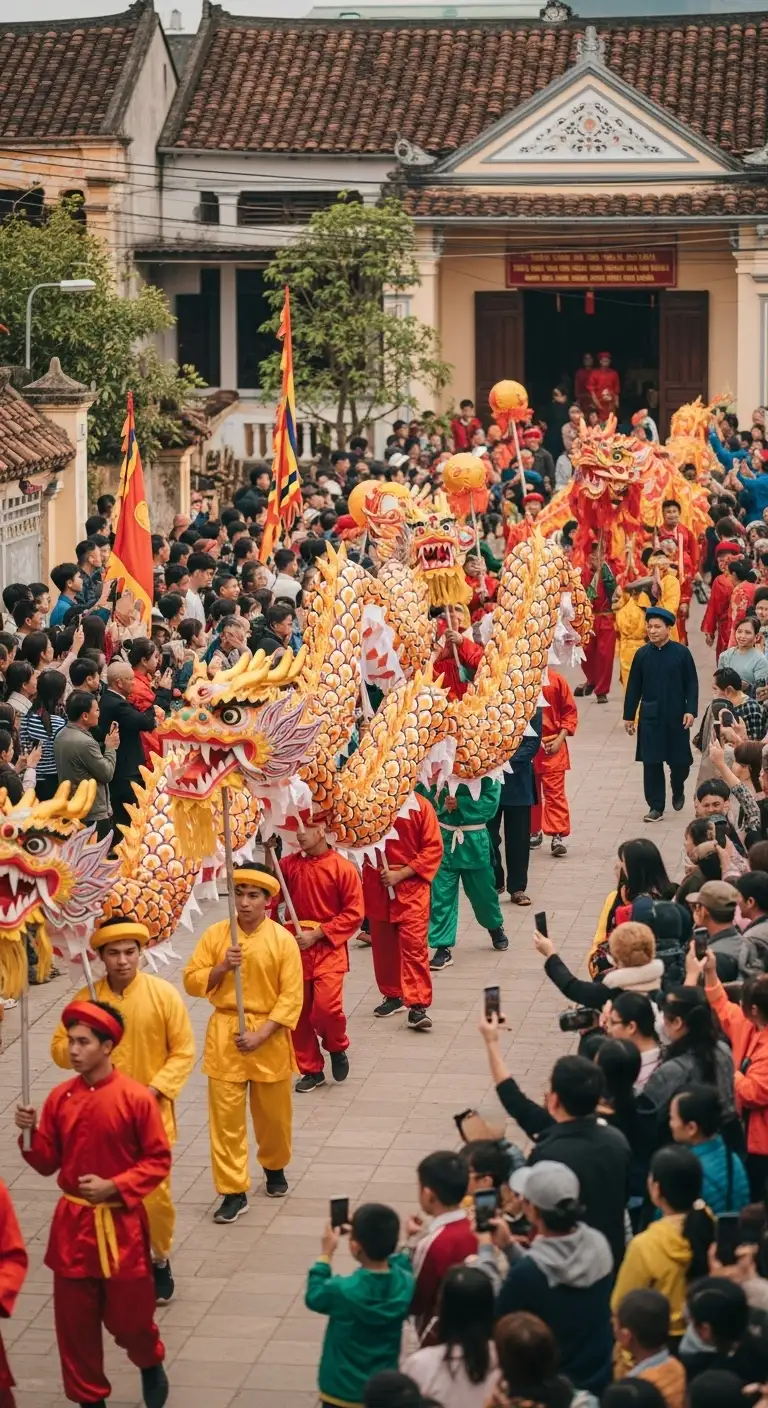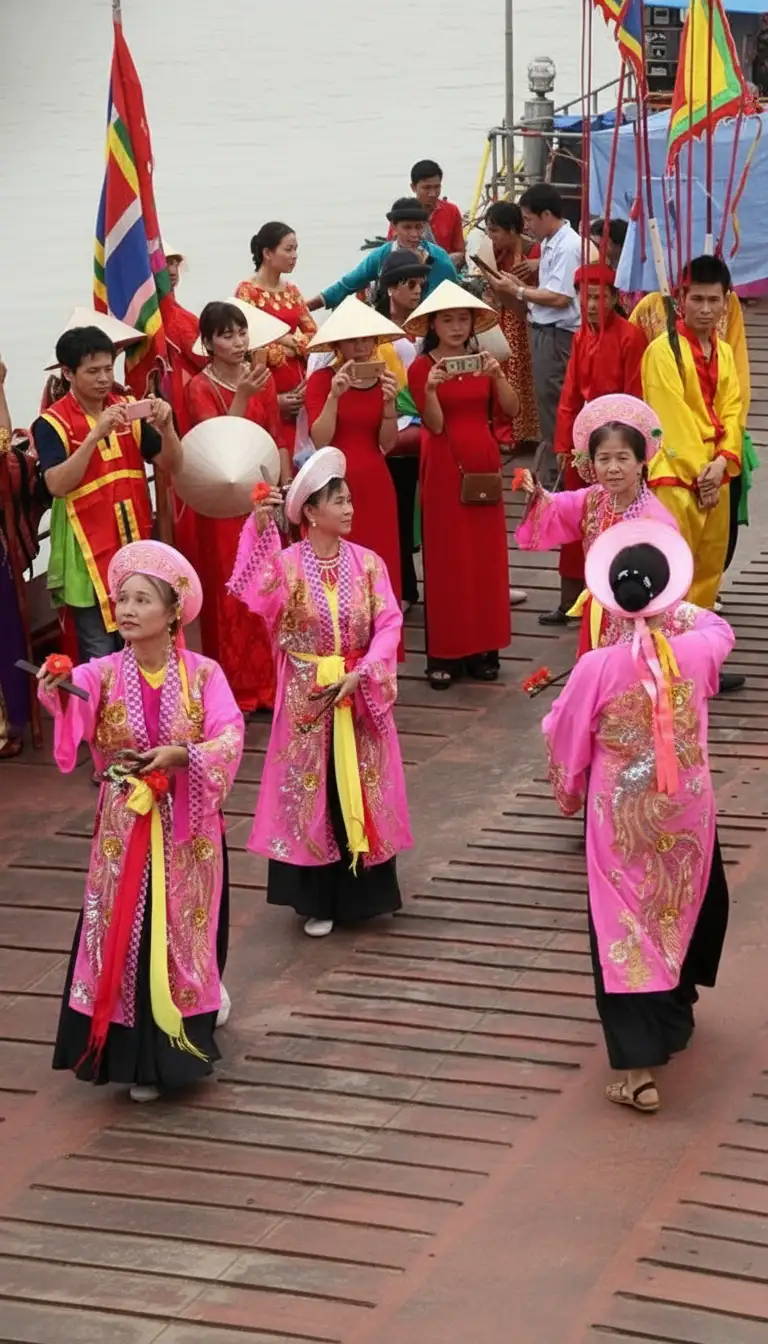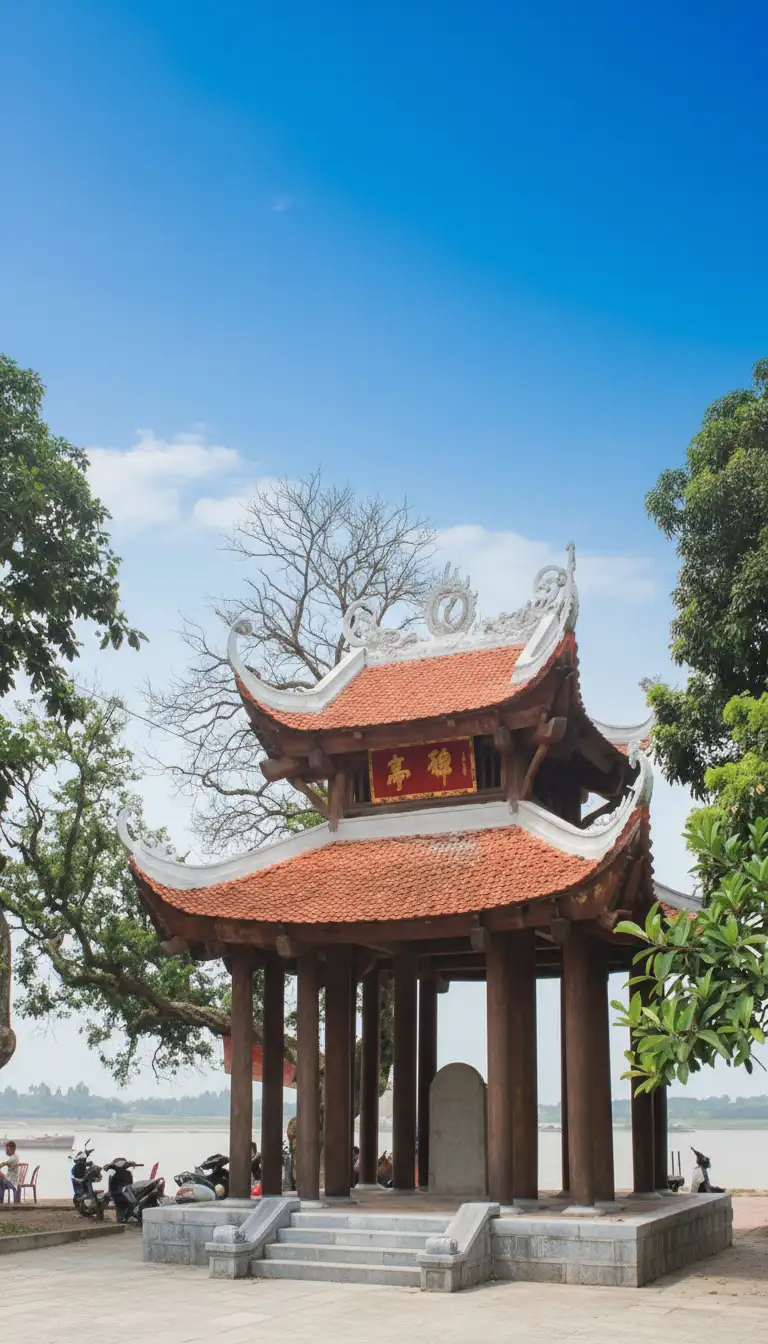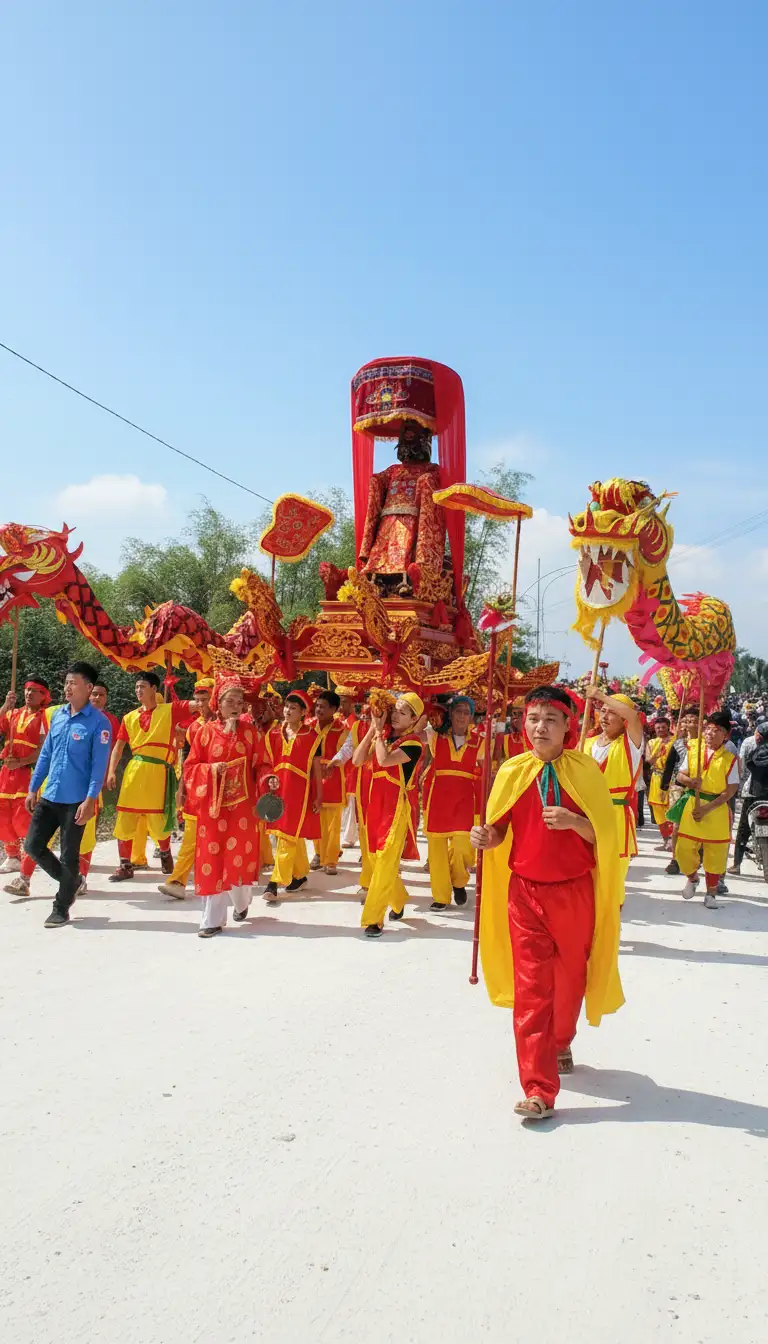Quick Facts
| Data Field (Title) | Content | Icon/Note |
|---|---|---|
| Official Vietnamese Name | Lễ hội Chử Đồng Tử – Tiên Dung | Also known as the Love Festival. |
| Location | Đa Hòa Temple and Dạ Trạch Temple, Khoái Châu and Văn Giang Districts, Hưng Yên Province, Vietnam. | Located along the Red River Delta, southeast of Hanoi. |
| Date | 10th to 12th days of the 2nd Lunar Month | Typically falls in March on the Western calendar. |
| Objects of Worship | Chử Đồng Tử (one of the "Four Immortals" in Vietnamese folk religion) and his two wives, Princess Tiên Dung and Princess Tây Sa. | Honors a legendary love story and agricultural development. |
| Cultural Heritage | Recognized as a National Intangible Cultural Heritage of Vietnam. |
I. Overview and The Legend of Immortal Love
The Love That Transcended Class
The Chử Đồng Tử Festival is one of the most significant and spiritually revered festivals in the Red River Delta region, dedicated to Chử Đồng Tử, a legendary figure credited with teaching the Vietnamese people farming, trading, and treating the poor. He is revered as one of the “Four Immortals” (Tứ Bất Tử) of Vietnamese mythology.
The festival celebrates the legendary love story between Chử Đồng Tử, a destitute fisherman, and Princess Tiên Dung, the beautiful and adventurous daughter of the 18th Hùng King.
The Mythical Encounter
A Fated Meeting: Chử Đồng Tử was so poor that he shared a single loincloth with his dying father. After his father’s death, he buried the loincloth with him and went without clothing. While hiding himself in the sand near the river, Princess Tiên Dung’s royal boat docked nearby for her to take a bath.
The Revelation: As the bath water washed away the sand, it revealed the young Chử Đồng Tử. Rather than being angered, the Princess—believing their meeting to be fate—proposed marriage immediately, defying the King’s social taboos and her own royal status.
The Ascension: After marrying, the couple travelled and learned from a sage. Upon returning, they used a magic staff and conical hat (gifts from the sage) to build a beautiful palace. Fearing his daughter was preparing for rebellion, the King sent troops to attack. However, overnight, a mystical storm lifted the palace and its residents into the sky, where they ascended to immortality.
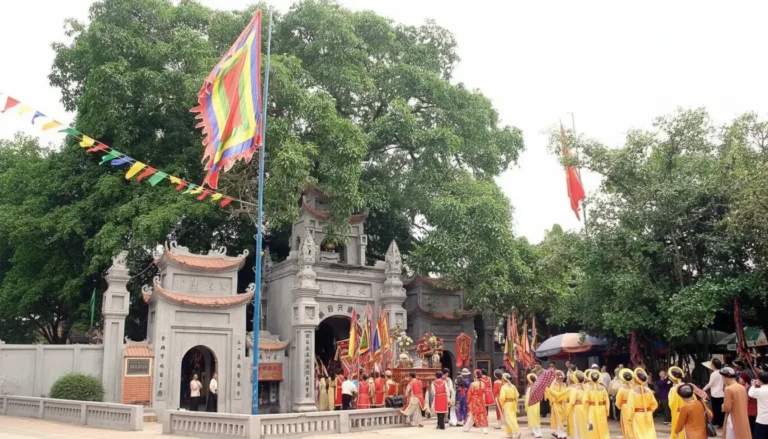
II. Festival Activities
The festival is characterized by highly solemn water rituals and vibrant folk performances.
1. The Water Procession (Lễ Rước Nước)
This is the most critical and visually stunning ritual of the festival, performed every three years on a large scale.
The Ritual: A long, colorful procession involving hundreds of pilgrims from the nine surrounding communes travels along the Red River dyke to the main temple, Đa Hòa.
Gathering the Water: At the riverbank, a highly ceremonial boat is used to collect sacred water from the Red River, symbolizing the purity of the land and the lifeblood of the delta. This water is then processed back to the temple to be used in worship and purification rituals.
2. The Communes' Procession
A Showcase of Piety: Nine villages participate in carrying the palanquins, offerings, and banners along the route to Đa Hòa Temple.
Costumes and Music: Participants are dressed in traditional, colorful ceremonial attire, accompanied by the festive sounds of drums and flutes, creating a magnificent display of collective faith and community cohesion.
3. Folk Games and Arts
Trống Quân Singing: A popular folk duet singing style performed by young men and women.
Wrestling and Martial Arts: Competitions showcase the community’s physical strength.
Dragon Dances and Traditional Games: Provide joyful entertainment for visitors and locals alike, celebrating the spring season and a prosperous year ahead.
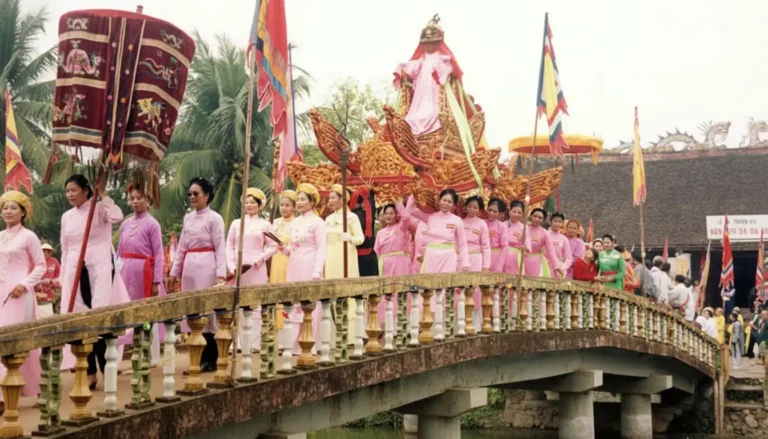
III. Visitor Information
| Guide Field | Details |
|---|---|
| When to Go | The festival officially runs for three days, but the main processions occur on the 10th day of the 2nd Lunar Month. Visitors should check the exact calendar date for the specific year they plan to attend. |
| Location Note | The temples are situated near the Red River, offering scenic views alongside the cultural spectacle. |
| Significance | The festival embodies profound Vietnamese values: the transcendence of love over social barriers, the importance of filial piety (Chử Đồng Tử buried his father with the only loincloth), and gratitude to the saint who introduced modern farming and commerce. |
